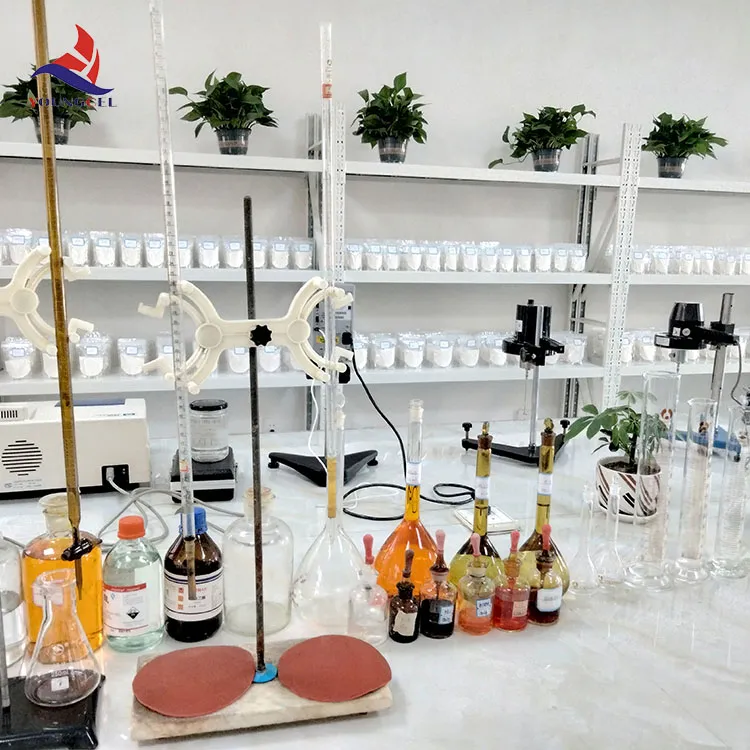The Role of HPMC in Chemical Adhesives
Hydroxypropyl Methylcellulose (HPMC) is a versatile cellulose-derived polymer that has gained prominence in various industries, most notably in the formulation of chemical adhesives. Its unique properties lend themselves well to enhancing the performance of adhesives used in construction, woodworking, and various manufacturing processes.
What is HPMC?
HPMC is a modified cellulose ether that is produced through the reaction of cellulose with propylene oxide and methyl chloride. The resultant product is a white to off-white powder that is soluble in water, forming a clear, viscous solution. Its molecular structure endows HPMC with several desirable characteristics, such as thickening, emulsifying, and film-forming properties. These features make HPMC an essential ingredient in many formulations, providing significant benefits in adhesive applications.
Properties of HPMC in Adhesives
1. Viscosity Control HPMC can alter the viscosity of adhesive formulations. By controlling the viscosity, manufacturers can enhance the application characteristics of their adhesives. High viscosity can prevent drippage and ensure that the product stays in place during use, while lower viscosity can facilitate easier application and spreading.
2. Water Retention One of the most advantageous properties of HPMC is its ability to retain water. In adhesives, this feature helps to ensure proper curing and bonding, particularly in applications that involve porous substrates. By retaining moisture, HPMC prolongs the working time and improves adhesion, leading to stronger bonds.
3. Adhesive Strength HPMC contributes to the overall adhesive strength through its film-forming capabilities. Upon drying, HPMC creates a flexible film that enhances the adhesion between surfaces. This film can provide excellent tensile and shear strength, making it ideal for various substrates, including wood, metal, and concrete.
4. Compatibility HPMC is compatible with a wide range of other ingredients used in adhesive formulations. This compatibility allows manufacturers to create custom blends that can address specific performance requirements, such as speed of set, strength, and flexibility.
chemic adhes hpmc

5. Non-Toxicity As a non-toxic, biodegradable product, HPMC is increasingly favored in eco-friendly formulations. Its safe profile is especially important in industries where health and environmental considerations are paramount.
Applications of HPMC in Chemical Adhesives
HPMC is utilized in numerous adhesive applications, reflecting its versatility
- Construction Adhesives HPMC is widely used in tile adhesives and joint compounds. Its water retention properties enhance workability and bonding strength, which are critical for these applications where adhesion must withstand environmental conditions.
- Woodworking Adhesives In the woodworking industry, HPMC helps to improve the performance of wood adhesives by ensuring excellent penetration into wood fibers and providing strong bonding characteristics.
- Pressure-Sensitive Adhesives (PSAs) The film-forming properties of HPMC enable it to be an important component in PSAs, which require good initial tack and shear resistance.
- Sealants HPMC is also employed in sealant formulations, particularly those requiring elasticity and adhesion to a diverse range of substrates.
Conclusion
In the realm of chemical adhesives, Hydroxypropyl Methylcellulose (HPMC) plays a critical role due to its unique properties and versatility. Its ability to enhance viscosity, water retention, adhesive strength, compatibility with other ingredients, and non-toxic nature makes it a popular choice in various industrial applications. From construction to woodworking, HPMC contributes significantly to the effectiveness and performance of adhesives, leading to stronger bonds and improved product quality. As industries continue to evolve and prioritize environmental sustainability, the demand for HPMC-based products is likely to increase, further cementing its position as a cornerstone in the formulation of chemical adhesives.
-
Rdp Powder: Key Considerations for Wholesalers in the Building Materials IndustryNewsJul.08,2025
-
Key Considerations for Wholesalers: Navigating the World of Hpmc - Based ProductsNewsJul.08,2025
-
Hpmc Detergent: Key Considerations for WholesalersNewsJul.08,2025
-
Key Considerations for Wholesalers: China Hpmc For Tile Adhesive, Coating Additives, Concrete Additives, and MoreNewsJul.08,2025
-
Crucial Considerations for Wholesalers: Navigating the World of Construction MaterialsNewsJul.08,2025
-
Key Considerations for Wholesalers Sourcing Additive For Cement, Additive For Concrete, Additive For Putty from Additive Manufacturer Shijiazhuang Gaocheng District Yongfeng Cellulose Co., Ltd.NewsJul.08,2025




